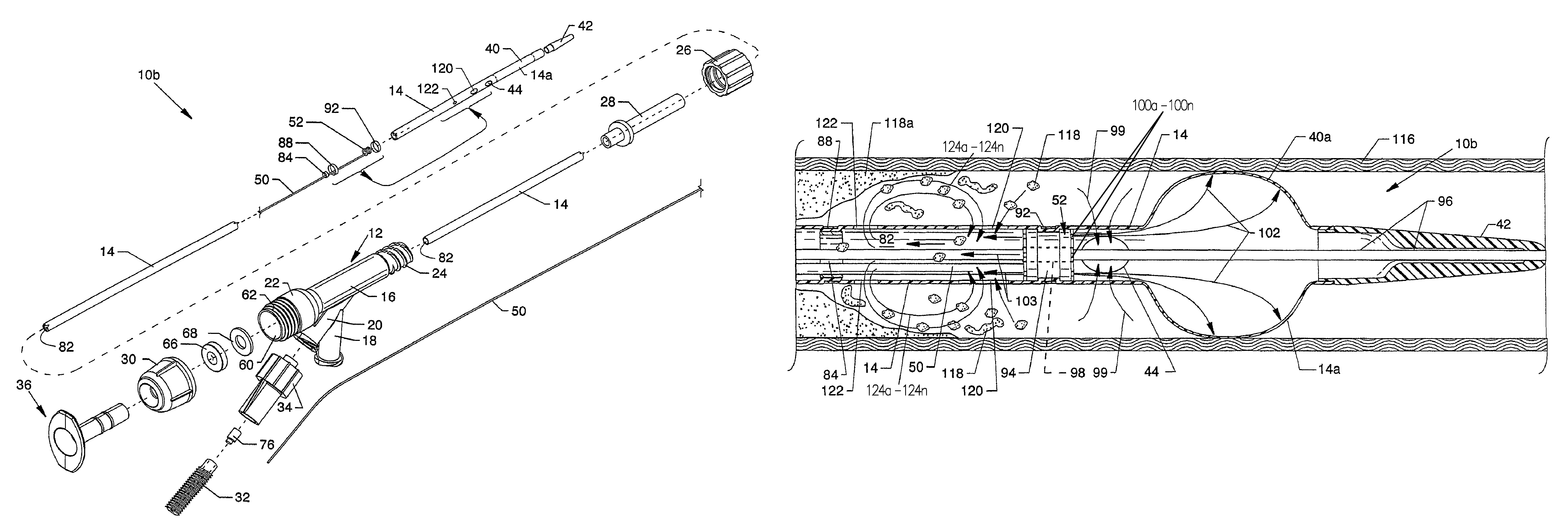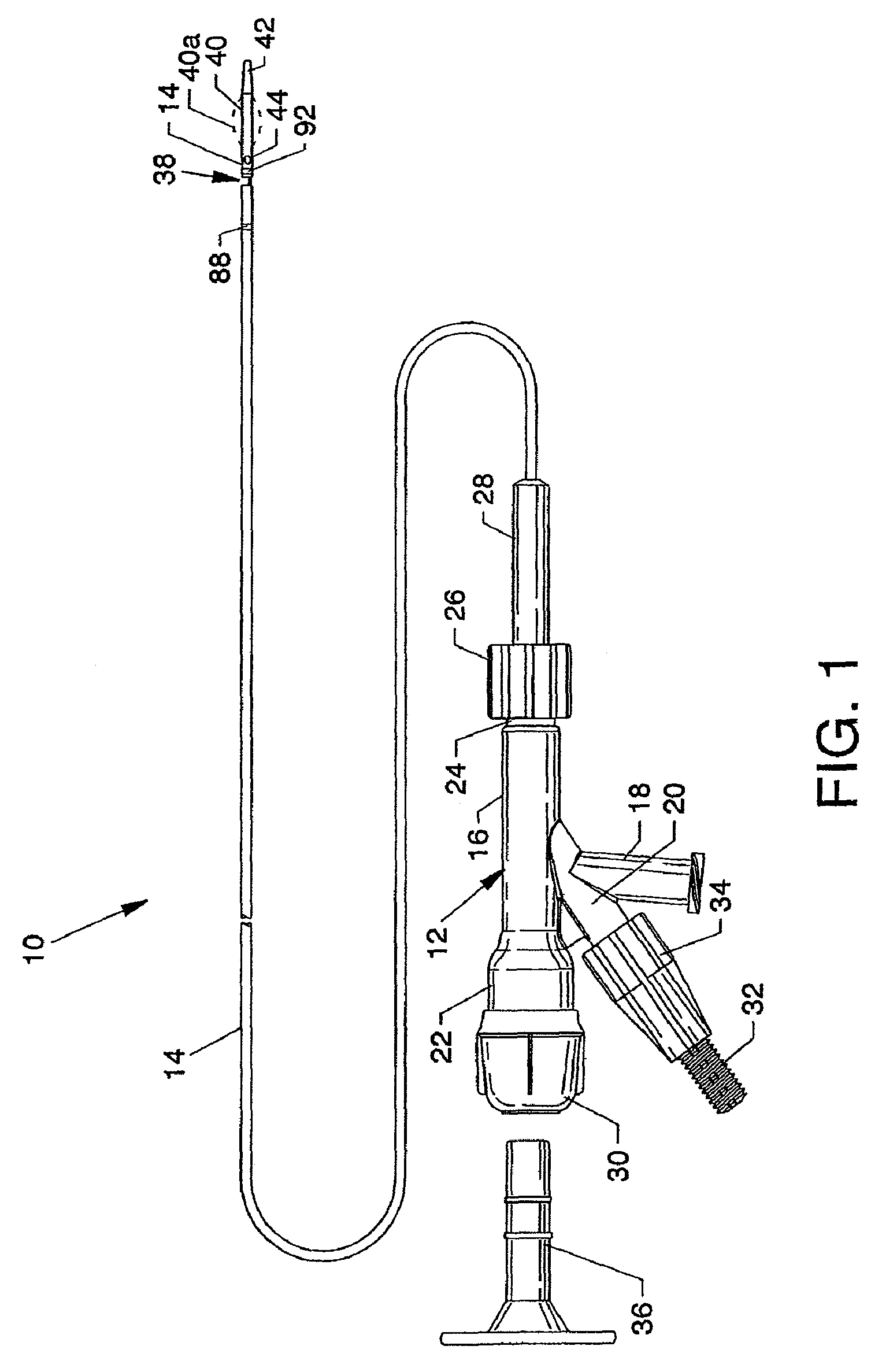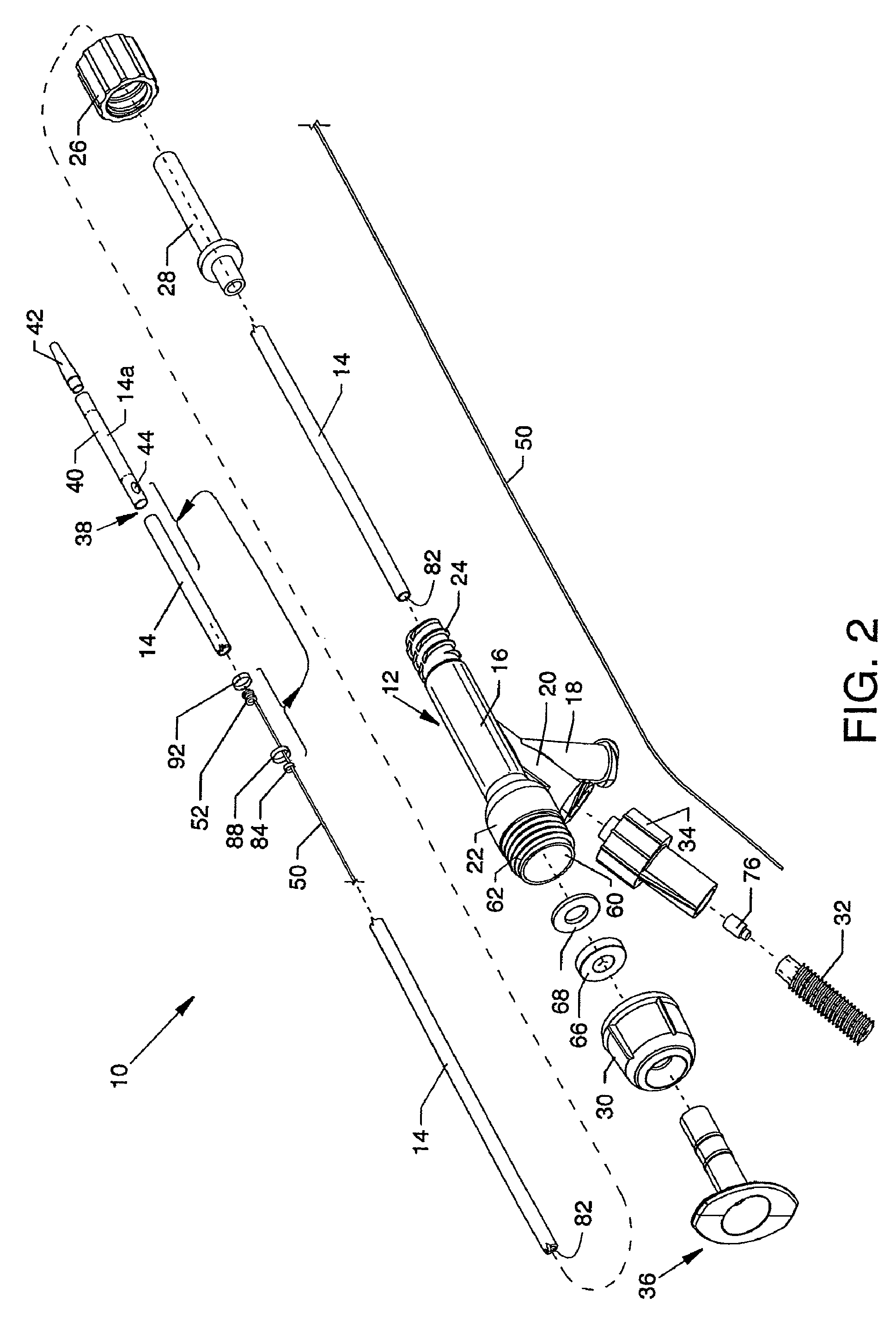Rheolytic thrombectomy catheter with self-inflating distal balloon
a thrombus and distal balloon technology, applied in the field of thrombus removal catheters, can solve the problems of affecting the effectiveness of thrombosis, affecting so as to optimize the effect of thrombosis, enhance the efficacy of thrombosis, and stop and/or impede blood flow in the vessel
- Summary
- Abstract
- Description
- Claims
- Application Information
AI Technical Summary
Benefits of technology
Problems solved by technology
Method used
Image
Examples
Embodiment Construction
[0051]FIG. 1 is a plan view of the visible components of rheolytic thrombectomy catheter 10. The device includes a one-piece manifold 12 having multiple structures extending therefrom or attached thereto, and also includes a flexible catheter tube 14, preferably constructed of one or more sections of Pebax® material, and other components associated therewith as described herein. The visible portion of the one-piece manifold 12 includes a central tubular body 16 (e.g., central elongated tubular body), a threaded exhaust branch 18 and a high pressure connection branch 20 extending angularly from central tubular body 16, a partially shown cavity body 22 extending proximally from central tubular body 16 and a threaded connection port 24 extending distally from central tubular body 16. The proximal end of catheter tube 14 is secured to manifold 12 by the use of a Luer fitting 26 accommodated by threaded connection port 24. The proximal end of catheter tube 14 extends through a strain rel...
PUM
 Login to View More
Login to View More Abstract
Description
Claims
Application Information
 Login to View More
Login to View More - R&D
- Intellectual Property
- Life Sciences
- Materials
- Tech Scout
- Unparalleled Data Quality
- Higher Quality Content
- 60% Fewer Hallucinations
Browse by: Latest US Patents, China's latest patents, Technical Efficacy Thesaurus, Application Domain, Technology Topic, Popular Technical Reports.
© 2025 PatSnap. All rights reserved.Legal|Privacy policy|Modern Slavery Act Transparency Statement|Sitemap|About US| Contact US: help@patsnap.com



